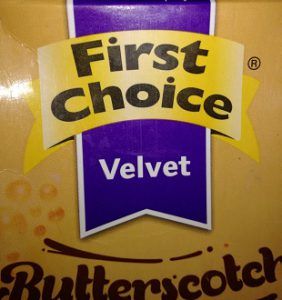I have noticed that there are various branding techniques used by manufacturers to attract our attention to their products. It ranges from the color, position, layout, font type and size, even the shape of the packaging. I realize that we have various things to consider when buying a product, such as the price, quality and availability of the product, but do the marketing tactics I mentioned also actually influence our decisions?
A label example of the First Choice® brand
As much as all of these things influence our buying decisions, I would encourage us to think further, taking the environmental impact of the product into consideration. The label of a product is one place to start looking for clues to determine whether that product has a negative impact on the environment. Many labels have phrases and buzz words such as “recycled” and “pasture-fed”, which is all good, but it is better to know what these phrases actually mean. It is also important to know if the content in the label can be traced in some way or another to the environmental impact of the product and its production.
The SWAN index (Read blog: What is the SWAN system?) is exactly such a measurement with the ability to trace the change in the environmental impact of milk processed by Woodlands Dairy (Read blog: Trace & Save operates the Woodlands Dairy Sustainability Project) and supplied under the First Choice® brand. It is important, if we truly care about the environment and the long-term availability of agricultural products, to support brands who supply products under a label whose environmental impact is actually measured in a manner that can be traced.
- Milk, is it really just milk or so much more to it? - 2018-05-25
- Upside down thinking - 2018-04-19
- Happy soil life, happy grass, happy cows - 2018-04-04


